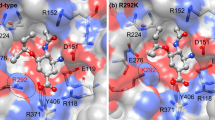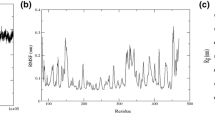Abstract
The H1N1 2009 virus is pandemic in many countries. The genome of this virus contains eight segments. Among the eight segments maximum numbers of mutation occur at the segment 1 and segment 4 which codes for PB2 subunit and hemagglutinin (HA) and less number of mutations occur in segment 6 which codes for neuraminidase (NA) protein. Neuraminidase (NA) inhibitors (Oseltamivir and Zanamivir) are presently used as an anti-flu drugs. In the present study, the in silico efficacy of different drugs was tested against the swine flu virus. 3D structures of neuraminidase (NA) proteins of H1N1 2009 were generated using Geno3D. The 3D structure of H1N1 1918 was downloaded from PDB. Interaction study was done using Arguslab 4 and PyMol view. Oseltamivir and Zanamivir have good number of interactions with H1N1 2009 virus and the scoring function also support to this result. When compared with the 1918 H1N1 viral protein, 2009 H1N1 NA protein shows more number of interaction and good scoring function. The RMSD value of before and after docking are found to be same at 0.04A° for both the drugs. The force field energy of NA protein 2009 was found to be −15603.529 KJ/mol before docking. The force field energy was found to be decreased after docking at −17620.740 KJ/mol with Tamiflu and −17652.242 KJ/mol with Zanamivir. The number of interaction and scoring function shows that Oseltamivir and Zanamivir will be able to effectively control the present pandemic H1N1 virus 2009.
Similar content being viewed by others
References
Michaelis M, Doerr H and Cinatl JJ (2009) Novel swineorigin influenza a virus in humans another pandemic knocking at the door. Med Microbiol Immunol 198(3):175–183
Zaraket H, Saito R, Sato I and Suzuki Y (2009) Molecular evolution of human influenza a viruses in a local area during eight influenza epidemics from 2000 to 2007. Arch Virol 154(2):285–229
Kirti K, Pooja S and Rup L (2009) Swine flu virus H1N1: a threat to human health. Indian J Microbiol 49:201
Morens D, Taubenberger J and Fauci A (2009) The Persistent Legacy of the 1918 influenza virus. N Engl J Med 361:363
Kou Z, Hu S and Li T (2009) Genome evolution of novel influenza a (H1N1) viruses in humans. Chinese Sci Bull 54:2159–2163
Shinde V et al. (2009) Triple-Reassortant Swine Influenza A (H1) in Humans in the United States. 2005–2009. N Engl J Med 360:2616–2625
Moscona A (2009) Global transmission of oseltamivir-resistant influenza. N Engl J Med 360(10):953–956
Hayden F (2006) Antiviral resistance in influenza viruses-implications for management and pandemic response. N Engl J Med 354(8):785–786
Lackenby A, Hungnes O and Dudman SG et al. (2008) Emergence of resistance to Oseltamivir among influenza A (H1N1) virus in Europe. Eurosurveillance 13:1–3
Mihajlovic M and Mitrasinovic P (2009) Some novel insights into the binding of oseltamivir and zanamivir to H5N1 and N9 influenza virus neuraminidases: a homology modeling and flexible docking study. Journal of the Serbian Chemical Society 74(1):1–13
van der Vries E, van den Berg B and Schutten M (2008) Fatal Oseltamivir-resistant influenza virus infection. N Engl J Med 359(10):1074–1076
Moscona A (2005) Oseltamivir Resistance — Disabling Our Influenza Defenses. N Engl J Med 353:2633–2636
Author information
Authors and Affiliations
Corresponding author
Rights and permissions
About this article
Cite this article
Singh, K.D., Muthusamy, K. In silico genome analysis and drug efficacy test of influenza A virus (H1N1) 2009. Indian J Microbiol 49, 358–364 (2009). https://doi.org/10.1007/s12088-009-0063-4
Received:
Accepted:
Published:
Issue Date:
DOI: https://doi.org/10.1007/s12088-009-0063-4




